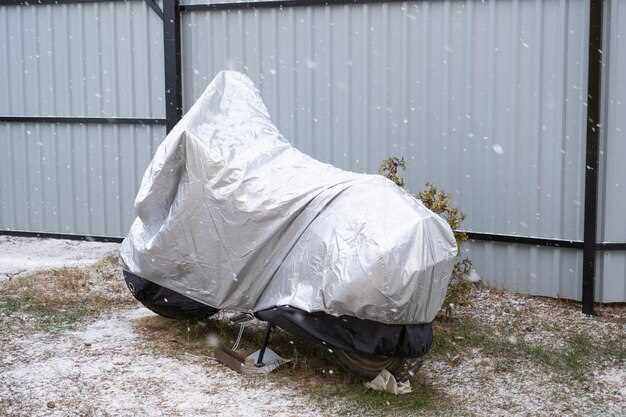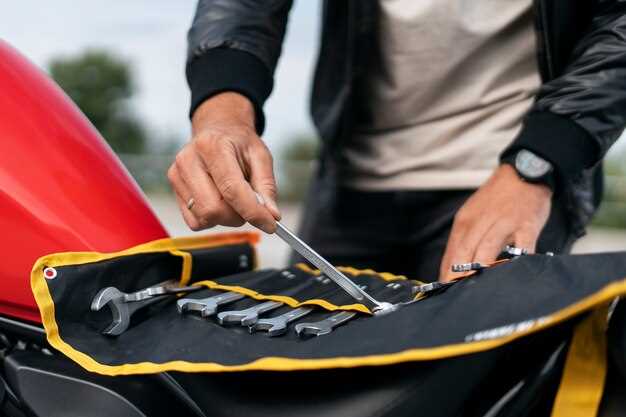
As the temperatures drop and winter approaches, it’s essential to consider the proper storage of your beloved bike. Ensuring your motorcycle is well-prepared for the cold months can significantly extend its life and performance. Winter storage is not just about putting your bike away; it requires careful attention to a range of factors to protect it from harsh weather conditions and potential damage.
Taking the time to properly care for your motorcycle before storing it can prevent a host of issues, including battery failure, rust, and fuel degradation. The right preparation involves a series of systematic steps, each aimed at preserving your bike in optimal condition until the riding season returns. From cleaning and maintenance to securing the right storage environment, each step is crucial for the longevity and reliability of your motorcycle.
This article will guide you through the essential steps to prepare your motorcycle for winter storage, ensuring it is protected and ready for action when the weather warms up. By following these care instructions, you can enjoy peace of mind knowing your bike is safely stored and primed for the next riding adventure.
Prepare Your Motorcycle for Winter Storage

Preparing your motorcycle for winter storage is essential to ensure its longevity and performance when spring arrives. Proper care during this period can prevent extensive damage caused by cold temperatures and humidity. Follow these steps to protect your motorcycle effectively.
| Step | Action | Details |
|---|---|---|
| 1 | Clean the motorcycle | Thoroughly wash and wax your motorcycle to remove dirt, grime, and contaminants. This reduces the risk of corrosion during storage. |
| 2 | Change the oil | Flush the old oil and replace it with fresh oil to prevent contaminants from settling in the engine. This step is crucial for keeping the engine in optimal condition over the winter. |
| 3 | Fuel treatment | Add a fuel stabilizer to a full tank of gas. This will help prevent fuel degradation and protect the fuel system from moisture build-up during storage. |
| 4 | Battery care | Remove the battery and store it in a cool, dry place. Use a battery maintainer to keep it charged and prevent sulfation. |
| 5 | Tire maintenance | Inflate tires to the proper pressure to prevent flat spots. Using a motorcycle stand can help support the bike and reduce stress on the tires. |
| 6 | Covers and protection | Invest in a high-quality motorcycle cover to protect it from dust and moisture. Ensure adequate ventilation to avoid trapping humidity inside. |
Following these steps will help ensure that your motorcycle remains in excellent condition during winter storage, ready for you to ride once the weather warms up. Proper care now translates to a smoother experience when it’s time to take the bike out on the road again.
Steps to Clean and Protect Your Motorcycle
Before storing your motorcycle for the winter, cleaning and protecting it properly is essential to ensure its longevity and performance. Follow these steps to take excellent care of your bike during the cold months.
1. Wash the Bike Thoroughly
Start with a complete wash of the motorcycle, using a gentle soap designed for vehicles. This removes dirt, grime, and any lingering road salts that could cause corrosion. Use a soft sponge or cloth to avoid scratching the surface. Rinse thoroughly and dry the bike with a microfiber towel to prevent water spots.
2. Inspect and Clean the Chain
The motorcycle chain should be cleaned and lubricated to ensure it remains in good condition. Use a chain cleaner and a brush to remove dirt and old lubricant. Once clean, apply a suitable chain lubricant and make sure to wipe off any excess to prevent dirt accumulation.
3. Treat the Fuel System
To protect your bike’s fuel system, fill the tank with fresh fuel and add a fuel stabilizer. This prevents the fuel from breaking down and causing gumming in the fuel lines, ensuring your motorcycle starts smoothly when the riding season resumes.
4. Change the Oil and Filter
Change the engine oil and filter before winter storage. Old oil contains contaminants that can harm the engine if left over the winter. Use high-quality oil suitable for your motorcycle and follow the manufacturer’s recommendations for the correct filter and oil type.
5. Protect Electrical Components
Check the battery and clean any corrosion from the terminals. Fully charge the battery, and consider removing it from the bike for maintenance during winter. Store it in a cool, dry place and use a battery maintainer to extend its life.
6. Wax the Exterior
Applying a coat of wax to the motorcycle’s exterior not only enhances its appearance but also provides a protective barrier against moisture and contaminants. This step helps prevent rust and keeps your bike looking new.
7. Cover Your Motorcycle
Finally, invest in a high-quality motorcycle cover to shield your bike from dust and moisture while in storage. A breathable cover is ideal to prevent mold and mildew buildup, ensuring that your motorcycle is in top condition for the next riding season.
By following these steps to clean and protect your motorcycle, you can ensure that it remains in excellent condition throughout the winter months, ready for action once the weather warms up again.
Battery Maintenance and Charging Tips
Proper battery maintenance is essential for ensuring your bike starts smoothly when you bring it out of winter storage. Here are key steps to follow:
- Clean the Battery Terminals:
Before storing your bike, ensure that the battery terminals are clean and free of corrosion. Use a mixture of baking soda and water to clean the terminals, then rinse and dry thoroughly.
- Check the Battery Voltage:
Use a multimeter to measure the battery voltage. A healthy battery should read around 12.6 volts. If the voltage is significantly lower, it may require charging before storing.
- Charge the Battery:
Connect a smart charger to keep the battery topped up during the winter months. This type of charger can automatically adjust to the battery’s condition, preventing overcharging.
- Use a Battery Tender:
A battery tender can be ideal for winter storage. It maintains the battery charge without the risk of overcharging, ensuring it’s ready for use when spring arrives.
- Disconnect the Battery:
If you’re not using the bike for an extended period, consider disconnecting the battery to prevent drain. Just be sure to remember the order: remove the negative terminal first, followed by the positive.
- Store in a Climate-Controlled Environment:
Whenever possible, store your bike in a climate-controlled area. Extreme temperatures can adversely affect the battery’s performance and longevity.
Following these battery maintenance and charging tips will help you ensure your bike is ready for action when winter is over, minimizing the risk of frustrating starts and costly replacements.
Properly Covering and Storing Your Bike

When preparing your bike for winter storage, proper covering and storing techniques are essential to ensure its longevity and reliability. Start by finding a clean, dry, and secure location to store your motorcycle. If possible, choose a climate-controlled environment to minimize exposure to extreme temperatures and humidity.
Cleansing and Protecting the Surface
Thoroughly wash your bike to remove any dirt, grime, and road salt that may contribute to corrosion during the winter. After washing, apply a protective wax or polish to shield the paintwork. Paying attention to metal components is also crucial; consider using a corrosion inhibitor on exposed areas to prevent rust.
Covering Your Motorcycle
Invest in a high-quality waterproof motorcycle cover that fits your bike snugly. A well-ventilated cover will protect against moisture buildup, which can lead to mold and electrical issues. Ensure the cover does not touch the bike’s surface to prevent scratches and allow air circulation. Avoid inexpensive tarps that may not offer sufficient protection.
Storing Essentials
Remove the battery and store it in a safe, dry location. If your bike has a fuel tank, fill it with fresh fuel and add a fuel stabilizer to prevent degradation over time. It is advisable to inflate the tires to the recommended pressure to avoid flat spots. Lastly, consider placing the bike on a stand to relieve pressure on the suspension and tires during its time in storage.
Following these steps to properly cover and store your bike will ensure it remains in excellent condition throughout the winter, ready for an enjoyable ride when the season changes.




